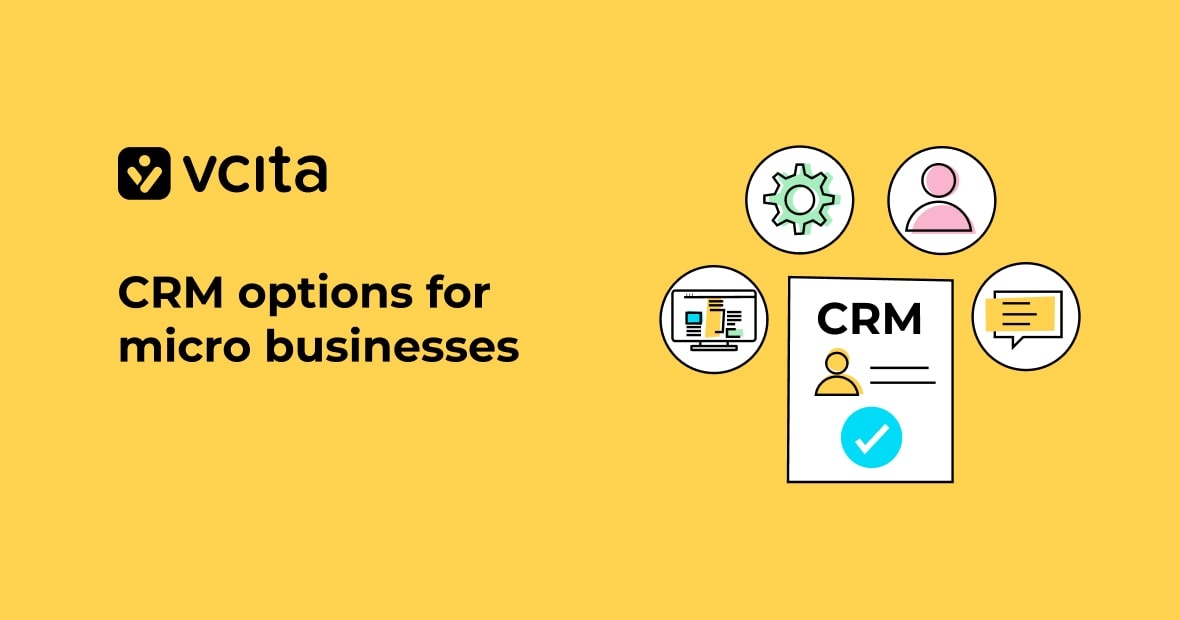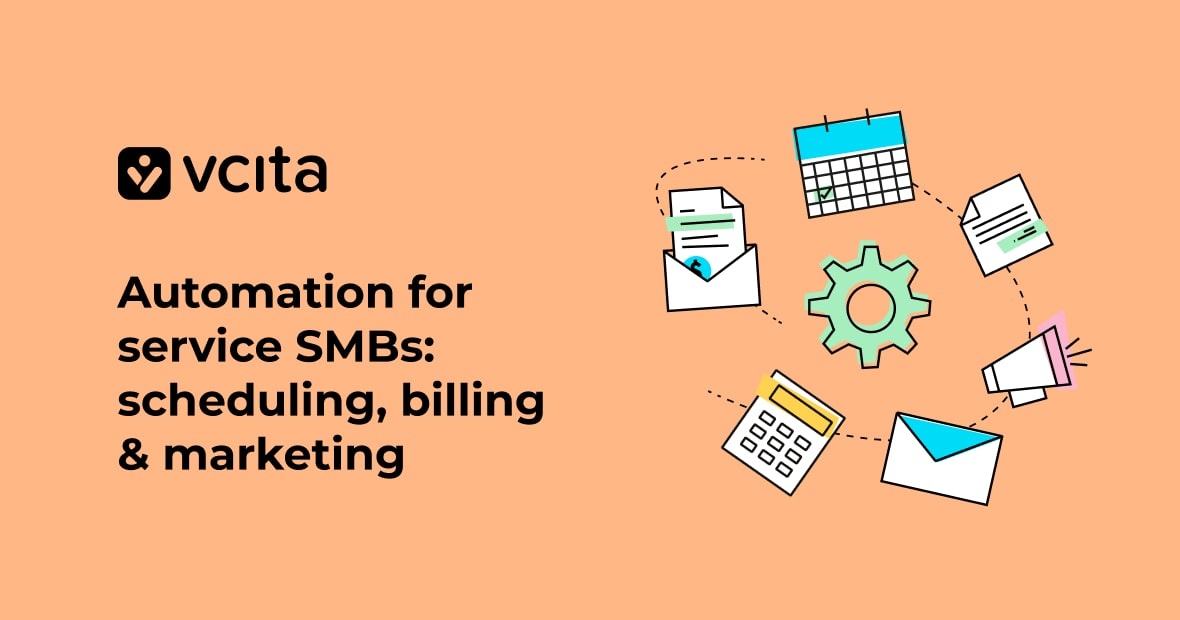Congratulations! You’ve successfully opened up your new business. That’s no small feat; you’ve chosen and verified your service business idea, sorted out your business financing, and attracted enough of a market to prove that your business is viable.
If only that was your fairy-tale ending. But new businesses are still fragile and, like any newborn, require constant care. The US Bureau of Labor Statistics data shows that around 20% of new businesses fail within the first two years of opening, and only 45% make it to five years. The SBA similarly shows that close to half of all businesses fold within 5 years, but once you get past that hurdle, business survival rates become a lot more stable.
You are most likely not just the owner and CEO, but you also have your hands deep in other roles like CFO, CMO, customer service representative, and chief cook and bottle-washer. Plus, of course, you want to hold onto your life outside of work.
So, how do you make it to survival, and then make it past that to the thriving stage? The only option is to manage the heck out of things. Here are some of the main concepts and potential challenges to consider when streamlining business management… so you can go from surviving to thriving.
Understand why businesses fail
Knowledge is power, and knowing what makes small businesses (and even large ones) fall apart empowers you to avoid being the next statistic.
There’s never a single overarching reason why some businesses don’t succeed, but they usually make one or many of the following common mistakes:
- Producing an ineffective product or marketing communications
- Selecting a poor location
- Delivering dissatisfactory customer service
- Skimping on market research
- Running out of funding or mismanaging cash flow
- Creating a rigid business model that cannot adapt quick enough to meet the needs of the business or industry variabilities
You can’t go solo on business management: delegation and automation
Creative agency owner Maria Rapetskaya admits making this mistake when she began her first business, writing “I developed an addiction to doing everything myself […] I found myself doing a lot of admin tasks I never anticipated. Those tasks came with learning curves, and they took up valuable time and energy — energy that could have been directed at helping the business grow.”
It’s vital to know your strengths and weaknesses so you can delegate those tasks you’re unskilled at (or hate) and focus on the areas where you excel.
Equally so, you should know your limits. That means recognizing when you have too much on and do something about it. It could be going up a tier on your business management platform so you can unlock more features, adding another tool to your toolbox, or hiring another employee.
Rapetskaya emphasizes delegation, adding “I didn’t make this mistake twice. With my second, far more successful attempt, I contracted out my half of the business just a couple of months in. Although my expenses grew, I could begin to focus on doing better work as well as devote time to business development. Both actions helped to grow the company far more quickly.”
Successful business owners know the value of digital tools to automate tasks, streamline processes and workflows, and remove as much busy work as possible. Some leading cloud software solutions include:
- Accounting software like QuickBooks that automatically produce regular financial reports and prefill tax forms
- Digital payment tools like vcita that automatically produces estimates, invoices, and receipts, processes payments, and follows up on late payments
- Data capture tools that gather data from scanned documents and images to reduce time on data entry
- Automated time tracking like Harvest that integrates with payroll tools and records employee expenses
- Automated online appointment scheduling like vcita to save time on the phone making, confirming or rescheduling appointments
- HR Software like Paylocity HR that automate the process of calculating vacation days, sick leave, overtime, compensation, and benefits.
Business records are not a luxury
Keeping accurate records is a vital part of running your business, even though it’s also one of the least popular. Financial documentation enables you to track where your money is going and stay within budget, plus most businesses are legally required to file financial reports each quarter or year.
The sooner you pick up on anything going wrong, like a dip in sales or an uptick in returns, the sooner you can fix it and avoid any long-term damage to your business reputation.
Business records you’ll need include:
- Financial statements like profit and loss reports, monthly balance sheet, and cash flow
- Employee records
- Tax filings and records for both state and federal taxes, and for sales and property taxes
- Official Secretary of State filings like your Certificate of Incorporation or business license
- Contracts with employees, partners, suppliers
- All your invoices and receipts
- Bank account statements
- Creditor records
In addition to tracking the details of your business’ progress, it’s important to regularly schedule a high-level audit (every 6 months or so) so that you can step back and assess the big picture.
The market is your neighborhood
As Sesame Street taught us, you need to know the people in your neighborhood. It’s crucial to stay on top of the norms and changing currents within your market.
Blockbuster Video is a classic example of what happens when you take your eye off market changes. The company missed it when the industry model changed from video and DVD rental stores to rental by mail, and was totally unable to keep up when streaming rentals emerged. Blockbuster tanked because it didn’t recognize the change on the horizon, and couldn’t evolve with the market.
You need to know the risks and opportunities emerging in your market and industry ASAP, so you’ll have time to evaluate them and make a decision on what to do.
That includes:
- Your competition: Follow your competitors’ updates so you’ll know who’s expanding into other lines of business, who’s downsizing staff or infrastructure, and who’s reorganizing their business to prepare for growth.
- Your supply chain: Make sure you use MRP software so you can have full visibility into every step of your supply chain, such as the preparation of your raw ingredients, the manufacturing of your products, as well as shipping and transport processes.
- Industry regulations and norms: You can’t be the last to know about a new safety protocol for your vertical, or changes to environmental or data privacy regulations.
- Your fulfilment and distribution network: If you’re selling physical products, you need to know what’s going on in your warehouses and delivery system at every step.
Every successful business rests on successful relationships
Success or failure often comes down to how well you connect with your customers and your staff. You need to listen to and learn from both groups if you want to stay afloat.
Employees carry the business
Your employees represent your brand to the rest of the world. Customer-facing workers determine how consumers relate to your business, so you need to make sure that they understand your messaging and feel positive about your company and its mission.
Some tips for keeping employees motivated and engaged include:
- Documenting processes so there are no misunderstandings about each person’s responsibilities and roles
- Removing silos between teams and individuals so that everyone can share ideas, data, and feedback
- Asking your staff what kind of benefits and perks appeal to them the most, e.g. do they want a higher level of health insurance or more bonding trips? Flexible working arrangements, or an in-office relaxation room? and then deliver those perk promises. But remember, never promise to deliver if the business cannot afford it. This will only insite animosity and resentment in your staff.
Customer experience drives business success
You need to understand customer needs, preferences, and pain points if you’re going to provide the customer experience (CX) they demand. Excellence in CX is a major differentiator for businesses in any vertical. Companies that provide outstanding CX reap the rewards, like Zappos, which has become practically synonymous with good customer service.
Research backs this up. An Adobe study found that 36% of companies who are leaders in CX said they exceeded their top business goal by a significant margin, compared with only 1% of the rest. PWC reports that 73% of consumers cite customer experience as an important factor in deciding where to shop, with 65% of Americans saying a positive experience has a bigger impact on their purchase decisions than top marketing. Yet only 49% of US consumers think companies deliver good CX, so there’s a clear opportunity.
It’s not enough just to perform market research before you start your business; expectations for CX and customer service keep evolving, so you need to constantly be in touch with trends and interests to be able to provide what your market wants.
Social media is one of the best ways to do this. Monitoring or listening tools like Mention track discussion around your company, service, or product, so you can stay up to date on what interests your customers without falling down the social media rabbit hole.
If you build it, they will come: not true
It might have worked for Kevin Costner, but you need marketing campaigns that inform consumers about your business, educate them about the benefits of your company over the competition, and give them an incentive to try you out.
There’s far too much to write about how to run effective marketing campaigns, but some main tips include:
- Use social media for both paid ads and organic marketing posts.
- Create a great website that’s clear and easy to navigate, fast to load, and is mobile friendly. Don’t forget a contact page on your site with easy access to customer support.
- Produce content in the form of blog posts, videos, photos, and social media posts that deliver value to your customers where they live the most.
- Measure progress by tracking marketing metrics like conversion and engagement rates. Google Analytics can also provide you with quality insights to help shape your messaging and communication lines.
- Research and implement SEO best practices, Adwords, keywords and search terms that are used by your target audience.
Running a successful business isn’t rocket science
You’re always going to come up against challenges while you’re running your own business, that’s the nature of the beast. But with the right tools, guidance from business experts in your field, and educated decision making, you can maintain and also exceed revenue expectations all while staying in the black no matter how much the environment around you changes.
It’s an awesome achievement to run a successful business that brings in a steady income, but you don’t have to stop there. You can keep on growing your reach to expand both your business and your profits. Sounds exciting? We share some tips in our next post, Grow.




























